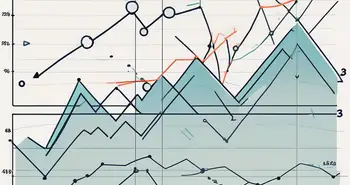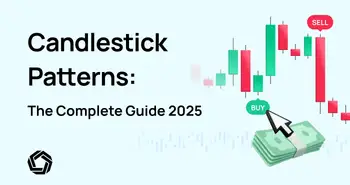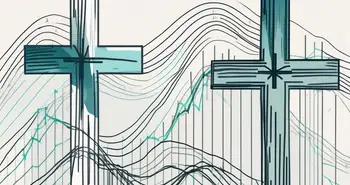Unlocking the Potential of Harmonic Patterns Trading: A Comprehensive Guide

In the world of trading, there are countless strategies and techniques that traders use to gain an edge in the market. One such approach that has gained popularity in recent years is harmonic patterns trading. As an expert in this field, I am excited to share with you a comprehensive guide that will help you unlock the potential of this powerful trading method.
Understanding the Basics of Harmonic Patterns Trading
Before we delve into the intricacies of harmonic patterns trading, let's first establish a solid foundation by understanding the concept of harmonic patterns in trading. Harmonic patterns are a series of price movements that exhibit specific geometric structures and ratios. These patterns occur time and again in financial markets and can provide valuable insights into future price movements.
Harmonic patterns are not just random occurrences in the market; they are based on mathematical principles that have been observed and studied for centuries. These patterns can be seen as a reflection of the underlying psychology of market participants, as they represent the collective behavior of buyers and sellers.
One key principle of harmonic patterns trading is the idea that history tends to repeat itself. By identifying these recurring patterns, traders can anticipate potential market turning points and take advantage of profitable trading opportunities. This concept is rooted in the belief that human behavior is predictable to some extent, and that patterns that have worked in the past are likely to work again in the future.
The Concept of Harmonic Patterns in Trading
Harmonic patterns are based on Fibonacci ratios, which are derived from the famous Fibonacci sequence. This sequence, discovered by the 13th-century mathematician Leonardo Fibonacci, is a series of numbers in which each number is the sum of the two preceding ones. The ratios between these numbers, such as 0.382, 0.618, and 1.618, have important implications in financial markets.
The Fibonacci sequence and its ratios have been found to have a remarkable presence in nature, art, and even financial markets. These ratios are believed to represent the natural balance and harmony that exists in the universe. When applied to trading, these ratios can help identify potential areas of support and resistance, as well as price targets for future price movements.
Harmonic patterns are formed by combining these Fibonacci ratios with specific price retracements and extensions. The most common harmonic patterns include the Gartley pattern, Bat pattern, and Butterfly pattern. Each pattern has its own unique structure and rules for identification, but they all share the common theme of using Fibonacci ratios to predict future price movements.
Key Principles of Harmonic Patterns Trading
Successful harmonic patterns trading relies on a few key principles. Firstly, it is crucial to wait for the completion of a harmonic pattern before entering a trade. Only once a pattern has reached its expected price levels can traders confirm its validity and proceed with their trading strategy.
Patience is a virtue in harmonic patterns trading. It is important to wait for the market to provide clear signals before taking action. Rushing into trades without proper confirmation can lead to unnecessary losses and missed opportunities.
Furthermore, it is important to consider the overall market context when trading harmonic patterns. By analyzing other technical indicators, such as support and resistance levels or trend lines, traders can increase the likelihood of their trades aligning with the broader market direction.
Additionally, risk management is a crucial aspect of harmonic patterns trading. Traders should always define their risk tolerance and set appropriate stop-loss levels to protect their capital. By managing risk effectively, traders can ensure that their losses are limited and their profits are maximized.
Lastly, continuous learning and practice are essential for mastering harmonic patterns trading. It takes time and experience to develop a keen eye for spotting these patterns and understanding their nuances. By studying historical charts, attending webinars, and participating in trading communities, traders can enhance their knowledge and improve their trading skills.
In conclusion, harmonic patterns trading is a fascinating approach to analyzing financial markets. By understanding the concept of harmonic patterns and applying key principles, traders can gain a deeper insight into market dynamics and potentially increase their trading success.
The Importance of Harmonic Patterns in Trading
Now that we have established a solid understanding of harmonic patterns, let's explore why they are important in the world of trading.
Harmonic patterns, with their unique ability to predict market trends and manage risk, have become an invaluable tool for traders across various financial markets. By identifying these patterns and understanding their significance, traders can gain a competitive edge and enhance their trading strategies.
Predicting Market Trends with Harmonic Patterns
One of the key advantages of harmonic patterns trading is its ability to predict market trends. By analyzing price movements and identifying harmonic patterns that indicate potential trend reversals or continuations, traders can make more informed decisions about when to enter or exit trades.
For example, a completed bullish Gartley pattern may suggest that the market is likely to reverse from a downtrend and start a new uptrend. This pattern, with its distinct structure and Fibonacci ratios, provides traders with a clear signal to anticipate a change in market direction. By recognizing this pattern, traders can position themselves ahead of the trend and maximize their profit potential.
Moreover, harmonic patterns can be used in conjunction with other technical indicators and tools to validate trading signals. By combining harmonic patterns with indicators such as moving averages, oscillators, or volume analysis, traders can increase the reliability of their predictions and make more accurate forecasts.
Risk Management and Harmonic Patterns
Risk management is a vital aspect of any trading strategy, and harmonic patterns trading is no exception. By setting up effective stop-loss orders, traders can limit their potential losses if a trade does not go as expected.
Harmonic patterns can also provide valuable information when it comes to determining potential target levels for profit-taking. By using Fibonacci extensions and other technical tools, traders can identify areas where the price is likely to encounter resistance or support, allowing them to exit their trades at optimal levels.
Additionally, harmonic patterns can assist traders in managing their risk-reward ratios. By calculating the distance between the entry point and the potential target level, traders can determine whether a trade offers a favorable risk-reward ratio. This analysis helps traders make informed decisions about which trades to take and which to avoid, ultimately improving their overall profitability.
Furthermore, harmonic patterns can be used to identify potential trade setups with favorable risk-reward profiles. By combining the analysis of harmonic patterns with other technical factors such as trendlines, support and resistance levels, or candlestick patterns, traders can pinpoint high-probability trading opportunities. This approach allows traders to focus on trades that offer a higher likelihood of success, while minimizing exposure to trades with unfavorable risk-reward ratios.
In conclusion, harmonic patterns play a crucial role in trading by providing traders with valuable insights into market trends and helping them manage risk effectively. By incorporating harmonic pattern analysis into their trading strategies, traders can enhance their decision-making process and increase their chances of success in the dynamic world of financial markets.
Types of Harmonic Patterns in Trading
Now that we understand the importance of harmonic patterns, let's explore some of the common types of harmonic patterns that traders often encounter.
Gartley Pattern and its Significance
The Gartley pattern is one of the most well-known harmonic patterns and consists of specific price retracements and extensions. It is named after H.M. Gartley, who first introduced the pattern in his book “Profits in the Stock Market” in 1935.
The Gartley pattern can indicate potential trend reversals and provides traders with entry and exit levels. By understanding the structure of the Gartley pattern and how to identify its key Fibonacci ratios, traders can effectively incorporate this pattern into their trading strategies.
Exploring the Bat Pattern
The Bat pattern is another significant harmonic pattern that traders utilize in their analysis. This pattern is characterized by specific price retracements and extensions that form a distinct structure resembling the wings of a bat.
By understanding the rules of the Bat pattern, traders can anticipate potential market turning points and take advantage of favorable risk-to-reward opportunities. The Bat pattern's unique structure provides clear entry and exit levels, making it a valuable tool in a trader's arsenal.
The Butterfly Pattern: An Overview
The Butterfly pattern is yet another important harmonic pattern that traders often incorporate into their trading strategies. This pattern is characterized by specific price retracements and extensions that form a symmetrical structure resembling the wings of a butterfly.
By correctly identifying and interpreting the Butterfly pattern, traders can gain insights into potential price reversals or continuations. The symmetry of the pattern provides traders with clear entry and exit levels, allowing them to make informed trading decisions.
Strategies for Harmonic Patterns Trading
Now that we have explored the different types of harmonic patterns, let's delve into some effective strategies for incorporating them into your trading.
Identifying Potential Trading Opportunities
Successful harmonic patterns trading begins with identifying potential trading opportunities. Traders can use various tools, such as Fibonacci retracements and extensions, to determine potential entry and exit levels based on harmonic patterns.
By combining technical analysis with harmonic patterns, traders can increase their chances of identifying profitable opportunities and capitalizing on them.
Setting Up Effective Stop Losses
Risk management is a crucial aspect of any trading strategy, and setting up effective stop-loss levels is essential when trading harmonic patterns. By placing stop-loss orders at strategic levels, traders can limit their potential losses if the market moves against their trades.
It is important to set stop-loss levels based on the structure of the harmonic pattern and other technical indicators. This ensures that trades are protected, even in the event of unexpected market volatility.
Maximizing Profits with Take Profit Levels
In addition to effective stop-loss levels, setting up take profit levels is equally important in harmonic patterns trading. By using Fibonacci extensions and other technical tools, traders can identify potential price levels where the market is likely to encounter resistance or support.
By taking profits at these predetermined levels, traders can maximize their return on investment and lock in their gains. Successful traders understand the importance of having a clear profit target and actively managing their trades to achieve their desired outcomes.
Overcoming Challenges in Harmonic Patterns Trading
While harmonic patterns trading offers many benefits, it also presents its own set of challenges. Let's explore some of the common obstacles traders may encounter and how to overcome them.
Dealing with False Signals
In any trading strategy, false signals can occur, and harmonic patterns trading is no exception. False signals can lead to losses if traders act on them without appropriate caution.
To mitigate the risk of false signals, traders should confirm harmonic patterns with additional technical indicators or market context. By taking a comprehensive approach to analysis and incorporating multiple factors into their decision-making, traders can increase the accuracy of their trading signals.
Managing Market Volatility
Market volatility can pose challenges for traders, as sudden price swings and unpredictable movements can impact the effectiveness of harmonic patterns. In volatile market conditions, harmonic patterns may not perform as expected, leading to potential losses.
Traders must adapt their strategies during periods of high volatility and adjust their risk management techniques accordingly. This may involve adjusting position sizes, widening stop-loss levels, or even temporarily pausing trading activities until market conditions stabilize.
Throughout my years of experience in harmonic patterns trading, I have encountered various challenges and learned valuable lessons along the way. I vividly remember a time when I experienced a string of consecutive losses due to misinterpreting a harmonic pattern signal. This experience taught me the importance of conducting thorough analysis and confirming patterns with other technical tools before entering into trades.
My advice to aspiring harmonic patterns traders is to never stop learning. The financial markets are constantly evolving, and staying updated with the latest developments and insights is crucial for success. Invest time in studying and practicing the art of harmonic patterns trading, and don't be afraid to seek guidance from experienced traders or mentors.
FAQs
What are harmonic patterns in trading?
Harmonic patterns are specific price movements in financial markets that exhibit geometric structures and ratios based on Fibonacci numbers. These patterns can help traders predict potential market turning points and identify profitable trading opportunities.
What are some common types of harmonic patterns?
Some common types of harmonic patterns include the Gartley pattern, Bat pattern, and Butterfly pattern. Each pattern has specific rules and characteristics that traders can use to identify potential entry and exit levels.
How can harmonic patterns help predict market trends?
By analyzing harmonic patterns, traders can gain insights into potential market reversals or continuations. These patterns provide traders with specific entry and exit levels, allowing them to position themselves ahead of potential trend shifts and maximize their profit potential.
How can I overcome challenges in harmonic patterns trading?
To overcome challenges in harmonic patterns trading, it is important to confirm patterns with additional technical indicators or market context. This helps mitigate the risk of false signals. Additionally, adapting strategies during periods of market volatility and managing risk through effective stop-loss and take-profit levels can help navigate challenging market conditions.
With a solid understanding of harmonic patterns, a disciplined approach to risk management, and continuous learning, traders can unlock the full potential of harmonic patterns trading. Remember, successful trading requires practice, patience, and perseverance. By incorporating harmonic patterns into your trading arsenal, you can enhance your trading skills and strive towards consistent profits.
Ready to elevate your trading with the power of harmonic patterns? Discover the innovative world of Morpher.com, where cutting-edge blockchain technology meets limitless trading possibilities. With Morpher, you can seamlessly apply your harmonic patterns trading strategies across a diverse range of assets, from stocks and cryptocurrencies to unique markets like NFTs and luxury goods. Experience the freedom of zero fees, infinite liquidity, and the flexibility of fractional investing and short selling. Take control of your investments with the secure Morpher Wallet, and if you're feeling bold, leverage your trades up to 10x. Join the trading revolution today, Sign Up and Get Your Free Sign Up Bonus at Morpher and unlock a world where trading is democratized for all.

Disclaimer: All investments involve risk, and the past performance of a security, industry, sector, market, financial product, trading strategy, or individual’s trading does not guarantee future results or returns. Investors are fully responsible for any investment decisions they make. Such decisions should be based solely on an evaluation of their financial circumstances, investment objectives, risk tolerance, and liquidity needs. This post does not constitute investment advice.

Painless trading for everyone
Hundreds of markets all in one place - Apple, Bitcoin, Gold, Watches, NFTs, Sneakers and so much more.

Painless trading for everyone
Hundreds of markets all in one place - Apple, Bitcoin, Gold, Watches, NFTs, Sneakers and so much more.









